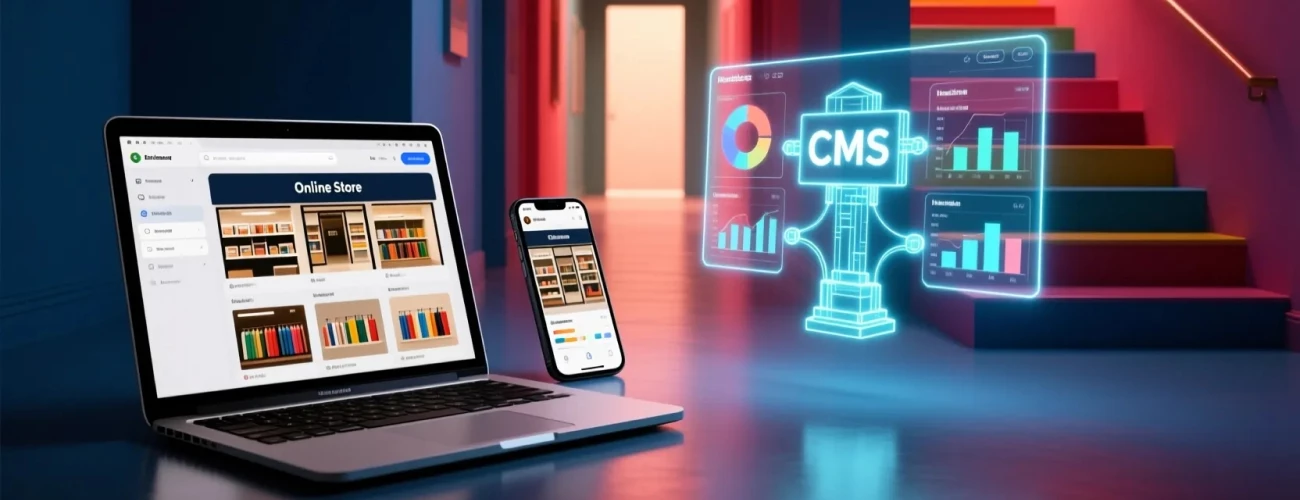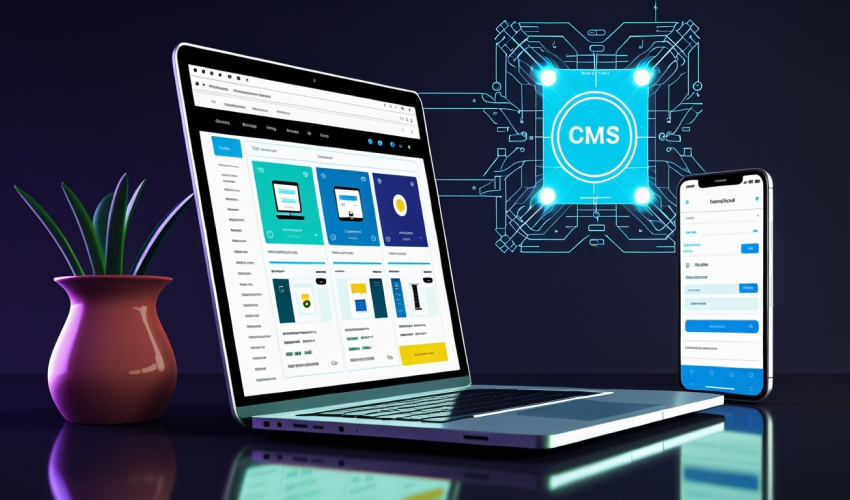Headless CMS technologies: why online stores need them

Need your e-commerce platform to easily adapt to new trends, quickly connect to marketplaces, and provide customers with a convenient interface? This is possible with headless CMS technology for online stores. It removes the limitations of traditional content management systems and gives your business freedom:
- a single database for all channels;
- flexible integration with services;
- the ability to launch new projects without lengthy redevelopment.
For online retail, this means more sales, fewer technical barriers, and stable growth. Read on to learn why headless CMS is essential.
What is Headless CMS
A headless CMS for e-commerce is a system that stores all your content — texts, images, product descriptions, services, and other data. However, it doesn’t decide how that content will be displayed on users’ screens — it has no built-in templates or ready-made frontend, meaning it essentially has “no head.” The appearance and interface are created separately, depending on the channel (website, mobile app, smartwatch, etc.) where the content will appear.
Information from a headless CMS is transferred to external applications through an API — a special “channel” that allows programs to securely exchange data. In practice, it works like this:
- the headless CMS stores and manages content (texts, images, product descriptions, etc.) and effectively acts as the content backend;
- upon request, the CMS transmits raw data through the API — for example, in JSON format, which is human-readable and easily processed by software;
- the interface of each device determines how to display the information to the user. It can partially hide or adapt the data based on technical constraints, app logic, or access rights.
This approach provides greater flexibility. The same content can be used across multiple channels and adapted for any device without the need to build a separate backend for each.
Advantages for e-commerce
A headless website opens new opportunities for online stores, making content management more flexible and efficient. The key advantages include:
- multichannel distribution — the same content is simultaneously available across all sales channels without duplication or extra edits;
- design flexibility — the frontend is developed separately, allowing rapid adaptation of interfaces to new trends without touching the backend;
- performance — static generation and CDN caching significantly boost page load speed;
- easy service integration — the CMS connects easily to CRM, recommendation engines, analytics, and payment providers via API, helping assemble the optimal business tech stack;
- fast feature deployment — developers can experiment with the interface and personalize the user experience without reworking the CMS;
- convenience for editors — marketing teams can centrally edit and localize content, which instantly becomes available across all channels;
- security and resilience — separating the frontend and backend enhances protection and service stability.
Administrators can manage data centrally, saving time and resources. All content updates, changes, and localizations are made in one place and immediately become available across all channels without needing separate edits.

Examples: Strapi, Contentful, Sanity
The following headless CMS platforms are excellent for developing online stores.
Strapi — an open-source JavaScript/TypeScript platform that can be hosted on your own server or used in the cloud. Strapi provides full control over data and API, supports REST and GraphQL, and is easy to configure. It’s ideal if you plan to manage your own server.
Contentful — a cloud-based (SaaS) platform designed for large and international projects. Its strengths include an intuitive admin panel, built-in localization and CDN delivery tools, and SDK and integration support. This makes it ideal for large teams that value performance and minimal operational costs.
Sanity — a cloud service with a customizable admin panel and its own query language, GROQ. It features a flexible structure and is perfect for teams that need collaboration and a highly customizable interface.
Using these platforms allows online stores to quickly adapt content for different channels, scale projects, and integrate external services while maintaining data control and interface flexibility.
When to Switch to Headless
Online stores should consider moving to a headless architecture if their current platform limits growth or complicates content management. A switch is recommended in the following cases:
- multichannel content — the same material must be published simultaneously on the website, mobile apps, marketplaces, and other channels;
- creating unique designs and fast pages — you plan to develop custom interfaces, web pages, and applications with optimized loading and high performance;
- fast feature deployment — marketing and technical teams can work in parallel without waiting for CMS updates;
- website or app scaling — the platform must handle increased traffic and expanded channels;
- integration with external services — the need to connect CRM, PIM, recommendation systems, analytics, or payment services via API;
- complex or dynamic content — large volumes of structured data, multiple versions and localizations, personalization, and real-time editing.
To learn more about developing websites with headless CMS, contact a manager at Megasite. We have been creating websites for over 10 years in Kyiv and other cities across Ukraine, helping businesses quickly adapt to new technologies and integrate modern solutions for online sales.
Your project
Call/write:


